No.1 Potala Palace (Lhasa)
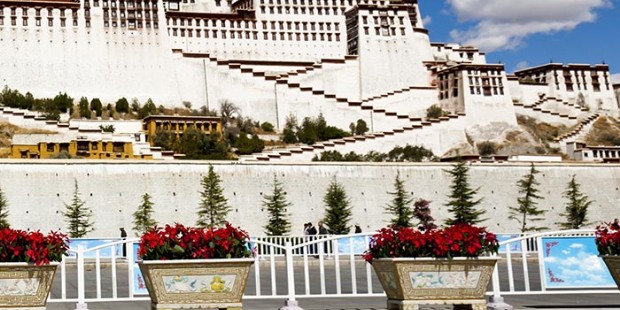
The Potala Palace is considered as a model of Tibetan architecture, and was originally built in the 7th Century by King Songtsan Gampo. Perched high up on the Red Hills, this ancient architectural complex remains the signature sight which represents Tibet. The palace is constructed using wood and stone structure and is split into two areas: The White Palace and The Red Palace. The White Palace comprises of halls, temples, courtyards and was the living quarters for the Dalai Lama. The Red Palace various chambers for worshipping Buddha and chambers housing the Eight Stupa that contain the remains of fifth through thirteenth Dalai Lama.
Lozang Gyatso, the Great Fifth Dalai Lama, started the construction of the Potala Palace in 1645 after one of his spiritual advisers, Konchog Chophel, pointed out that the site was ideal as a seat of government, situated as it is between Drepung and Sera monasteries and the old city of Lhasa. It may overlay the remains of an earlier fortress, called the White or Red Palace, on the site built by Songtsen Gampo in 637. Today, the Potala Palace is a museum.
The building measures 400 metres east-west and 350 metres north-south, with sloping stone walls averaging 3 m. thick, and 5 m. thick at the base, and with copper poured into the base to help proof it against earthquakes. Thirteen stories of buildings – containing over 1,000 rooms, 10,000 shrines and about 200,000 statues – soar 117 metres on top of Marpo Ri, the "Red Hill", rising more than 300 m in total above the valley floor.
No.2 West Lake (Hangzhou)
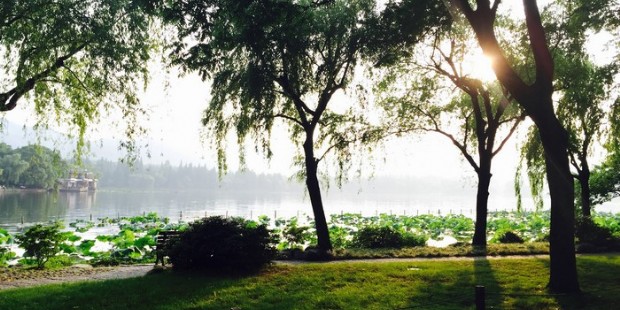
The West Lake came from a shallow bay in ancient times where Qiantang River ran into the sea. It was formerly named as Wulin Waters, Golden Buffalo Lake, Qiantang Lake and Xizi Lake. As it lies in the west of Hangzhou, it was later named the West Lake.
Centered on the West lake, the West Lake Scenic Area is a national scenic area with a total area of 60 square kilometers. There are over 60 cultural relic sites of state, provincial and municipal levels and over 100 attractions. Among them, the most classic is the Top Ten Scenes and the New Top Ten Scenes at the West Lake.Take a Hangzhou west lake tour and you should not miss any of the west lake tourist attraction.
No.3 The Forbidden City

The Forbidden City (紫禁城)was built under the reign of the third Ming Emperor Yongle. Today it is considered one of the most spectacular masterpieces of the world. The palace was designed by three architects and took 14 years to complete this extraordinary structure. Whilst creating this magnificent building, architectures took into account Feng Shui and how to harmonize buildings.
The five prime colors used throughout the palace are white, black, red, yellow and blue. Terraces were built using white marble, black paving for the gardens and courtyards, red columns and bright yellow roofs are drawn against the blue background. The building of the Forbidden City began in 1406 and required one million workers and 100,000 artisans to complete this extraordinary work of art. The palace today serves as a modern day museum with artwork, calligraphy and other artifacts are put on display for visitors to admire.
No.4 Terracotta Warriors and Horses
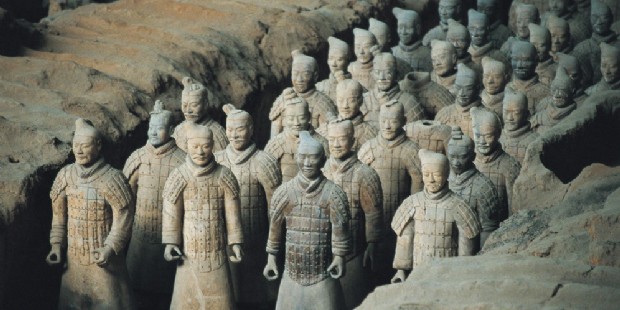
Terracotta Warriors and Horses,also called terracotta army, is known as "the Eighth Wonder of the World", and is ranked the human cultural heritage of the world.
The Terracotta Warriors and Horses of the Qin Dynasty shocked the people all over the world with their magnificent vigor and outstanding carving art. The No. 1, 2, 3 and 4 pits have been excavated. The terracotta warriors tour in Xian allow you to see the vivid and lifelike figurines, each warriors has different features and facial expression. The warriors on the war chariots, warriors riding horses and infantry warriors in large numbers formed different combinations in an orderly and solemn way.
The spectacular life like Terracotta Army can be separated into three pits. All statues have unique expressions and the armor of each soldier also varies depending on rank. Moreover, different statues have different poses and facial expressions all faces were unique.
No.5 Li River

Li River is located in the eastern part of Guangxi province, it belongs to Zhujiang branch. Li River has roots in Yucheng Ling—"The first peak in Huanan". The mainstream of Li River is called Liudong River.
Li Rive is 160 kilometers long, and can be divided into 3 parts. The first section is from downtown Guilin to the Ox Gorge. There are towns, villages and pastoral scenes, which is also a nice place to appreciate the fantastic mountains and waters. Moreover there are various different attractions in the section, such as the Elephant Trunk Hill, Forest of Odd-Shaped Peaks, Daxu Ancient Town, and the Ox Gorge.
The second section is from the Ox Gorge to the Water-Dropping Village. Various Rocky Mountains are at the flank of the river. The main attractions are Wangfu Rock, Crown Cave, Half-side Ferry, Mural Hill and the Xingping Landscape.
In the third section, which goes from the Water-Dropping Village to Yangshuo, many beautiful types of scenery are waiting for you. Here the Li River fully shows its verdant mountains, fragrant waters, spectacular caves and exquisite stones.
No.6 Jiuzhai Valley (Jiuzhaigou)
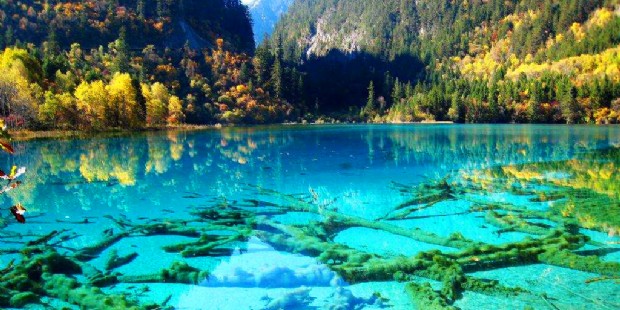
Jiuzhaigou Valley is a nature reserve and national park located in northern Sichuan Province of southwestern China. Jiuzhaigou Valley scenic and historic interest area is part of the Minshan Mountain range on the edge of the Tibetan Himalayan Plateau and stretches over 72,000 hectares. It is known for its many multi-level waterfalls, colorful lakes, and snow-capped peaks, with an elevation ranging from 2,000m to 4,500m.
As one of China's most spectacular scenic sites and has been enlisted as a UNESCO heritage site since 1992, Jiuzhai Valley China is the perfect destination all year round with the change of seasons and the park has the most sensational landscapes. There are endangered plants and species which you can discover with an adventurous hike in the colorful clusters of the forest.
No.7 The Bund (Shanghai)
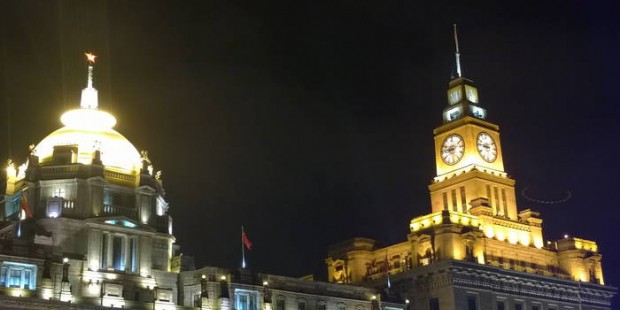
The Bund is one of the symbols of Shanghai which located along the Huangpu River. It usually refers to the buildings and wharves on this section of the road, as well as some adjacent areas. It is one of top 10 shanghai tourist attractions. If you have never been to the Bund, you have never been to Shanghai.
The Bund is home to some of the most historical buildings, it was once the location for many banks and trading houses from all over the world. To begin with the area was originally a British settlement then later developed into an international area of residency. By the 1940s The Bund was the home to the four biggest financial institutions and was China's financial hub. However, after the Communist victory in the civil war the once glamorous bund with its international financial institutions and extravagant hotels and leisure were slowly removed.
No.8 Chengdu Research Base of Giant Panda Breeding
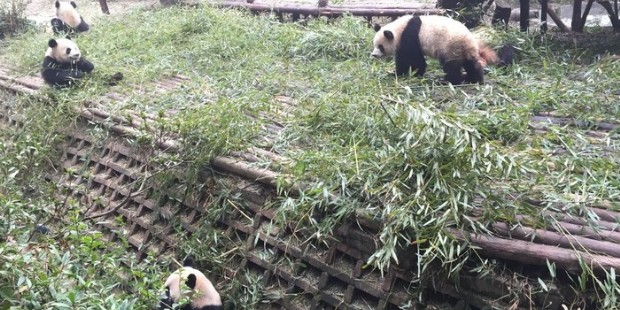
Chengdu Research Base of Giant Panda Breeding, or simply Chengdu Panda Base, is a non-profit research and breeding facility for giant pandas and other rare animals. It is located in Chengdu, Sichuan, China.
The Chengdu Panda Base was established in 1987 and to begin with had a total of 6 cubs. Over the years the Base has managed to breed 124 cubs of which 83 survived and today efforts are still in place to help save the endangered species. Here you can get up close and personal with the adorable creatures and see their daily lives within the enclosed habitat.
The Panda Base is currently in its third phase of expansion where the area will be increased from 106 hectares to 200 hectares. The proposed expansion will create more space and area of other endangered species such as the Red Panda and the Golden Monkeys.
No. 9 The Great Wall of China
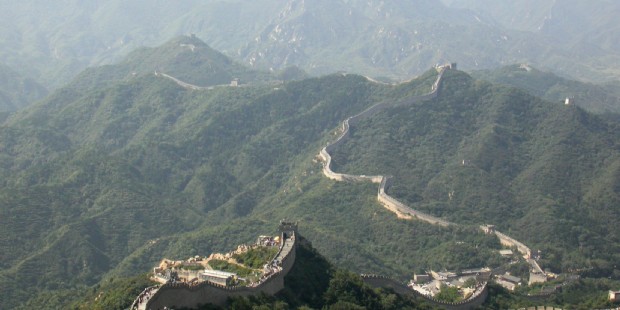
The Great Wall in Beijing, China to begin with was a series of many small walls that were not interconnected. The first sections of the wall were built as early as 600 B.C. As time progressed Chinese emperors from different dynasties connected the walls together to keep out Huns, Mongols and other tribes. Thousands of soldiers, criminals and peasants worked on building the wall.
The Great wall is made of earth, mud, stone and bricks. The height of the wall is between 5 and 9 meters tall and is up to 8 meters wide. There are towers every few hundred meters that were once used to store military supplies and more importantly were watch posts that were used to send information. Cannonballs and smoke signals were used by guards to inform other towers of possible intruders.
No. 10 Yangtze River (Chongqing)

Winding about 3,964 miles, Yangtze River is the largest river in China and the third largest in the world after the Nile in Africa and the Amazon in South America. Originating from the Tanggula Range in Qinghai Province in western China, the Yangtze River traverses eleven provinces and cities from west to east, including Qinghai, Tibet, Sichuan, Yunnan, Chongqing, Hubei, Hunan, Jiangxi, Anhui, Jiangsu and Shanghai. Finally it pours into the East China Sea at Shanghai.
Yangtze River is the third-longest river in the world and home to more than 300 million people. Yangtze River cruise is an amazing experience to see the power and majesty of China's greatest river. As the ship passes through deep valleys of green hills and narrow canyons with sheer rock cliffs on both sides, passengers become lost in a timelessness that has escaped the rest of the world.
Acting as the largest water system in China, Yangtze River is historically, economically and culturally important to China. Yangtze River has numerous tributaries including Min River, Han River, Jialing River, Gan River and Huangpu River etc. The Three Gorges Dam on the river is the largest dam project and hydro-electric power station in the world. Generally, people consider the Yangtze River a dividing line between North China and South China. Areas to the north and the south of the river have many differences in climate, scenery, economics, culture and folk customs. More luxury China tours here.
Reference, http://www.chinatouradvisors.com/attractions/Top-10-Tourist-Attractions-in-China.html
没有评论:
发表评论